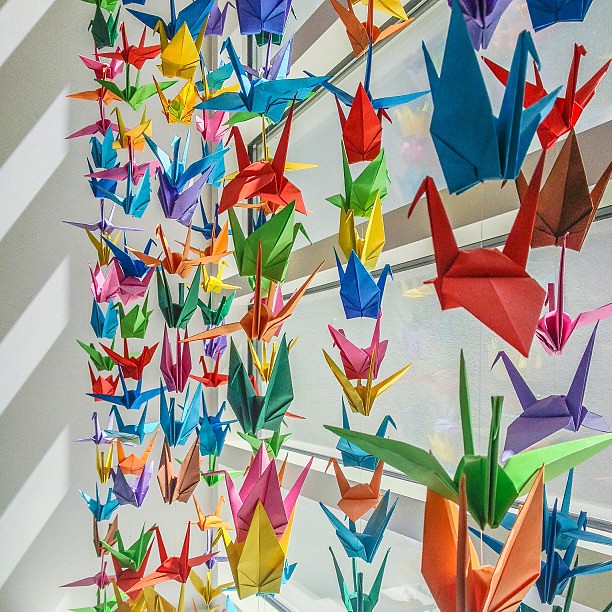ORIGAMI CRANE - THE MEANING
In Japan, a crane is a symbol of hope, happiness and long life. An ancient Japanese legend promises that anyone who folds a thousand origami cranes will be granted a wish. Some stories believe you are granted eternal good luck, instead of just one wish, such as long life or recovery from illness or injury.
This legend was popularized by the story of
Sadako Sasaki.
Sadako Sasaki was two years old when the bomb was dropped on her home city of Hiroshima on August 6, 1945. Sadako seemed to escape any ill effects after her exposure to the bomb, until, ten years later, she developed leukemia, "the atom bomb disease."
When she was in the hospital, her friend Chizuko brought her a folded paper crane and told her the story about it. According to Japanese legend, the crane lives for a thousand years, and a sick person who folds a thousand cranes will become well again.
Sadako folded cranes throughout her illness. The flock hung above her bed on strings. When she died at the age of twelve, Sadako had folded six hundred and forty-four cranes. Classmates folded the remaining three hundred and fifty-six cranes, so that one thousand were buried with Sadako.
In 1958, with contributions from school children, a statue was erected in Hiroshima Peace Park, dedicated to Sadako and to all children who were killed by the atom bomb.
Each year on August 6, Peace Day, thousands of paper cranes are placed beneath Sadako's statue by people who wish to remember Hiroshima and express their hopes for a peaceful world. Their prayer is engraved on the base of the statue:
This is our cry, this is our prayer. Peace in the world.
Where to learn more about Sadako´s story:
song Cranes Over Hiroshima by Fred Small
book Eleanor Boerr: Sadako and the Thousand Paper Cranes
book Karl Bruckner: Sadako will leben

Žádné komentáře:
Okomentovat